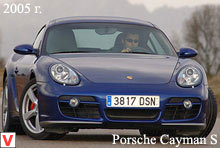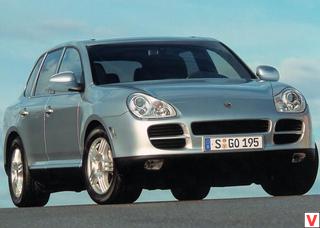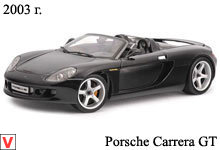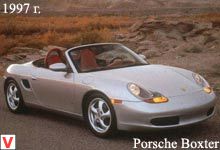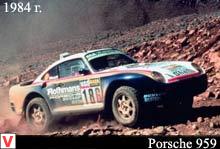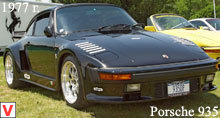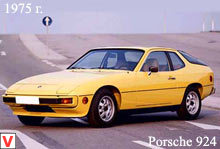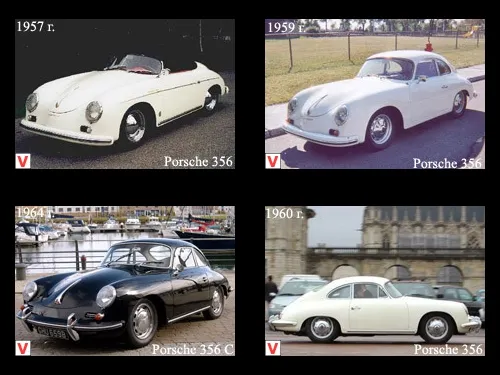
Porsche 356 was created by Ferdinand "Ferry" Porsche (the son of the company's founder Ferdinand Porsche). Model Porsche 356 had a 4-cylinder engine with air cooling, located in the rear, used a unified sump and body structure. While the bodywork was developed by Porsche employee Irwin Komenda, its mechanical component (including the engine, suspension and chassis) was developed by Volkswagen. The first Porsche 356 was tested in Austria, on June 8, 1948, and used many details from Volkswagen for production economy. Porsche specialists quickly reworked and improved the car in order to improve performance.
The bodies of the early Porsche 356 were made by hand in Gmünd of aluminum, in Stuttgart in 1950 the bodies were already made of steel. The first 356 were sold mainly in Austria and Germany. Since the creation of the first prototype, Porsche took 2 years to assemble the first 20 cars. In the early 50s, the Porsche 356 earned fame among enthusiasts on both sides of the Atlantic for its aerodynamic qualities, handling and superior build quality. Owners of the model 356 usually also drove well on street roads as they were chasing along the tracks.
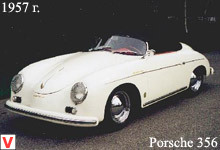
Urban and racing cars brought Porsche success, and in 1964 the company received an order for the manufacture of more than 10 thousand cars, about 76 thousand models were produced in total, the latter were assembled in 1965. Owners of the model 356 usually also drove well on street roads as they were chasing along the tracks. Urban and racing cars brought Porsche success, and in 1964 the company received an order for the manufacture of more than 10 thousand cars, about 76 thousand models were produced in total, the latter were assembled in 1965. Owners of the model 356 usually also drove well on street roads as they were chasing along the tracks.
Urban and racing cars brought Porsche success, and in 1964 the company received an order for the manufacture of more than 10 thousand cars, about 76 thousand models were produced in total, the latter were assembled in 1965. The basis of the model 356 remained constant throughout its production, technical improvements were preferred to small external changes in the design. Nevertheless, the models (with both closed and open bodies) that were produced from 1948 to 1965 were diverse.
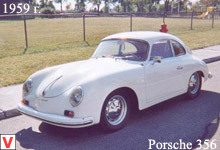
The model range 356 is mainly divided into two large groups. The Porsche 356 Coupe / Cabriolet (Coupe or cabriolet) was easily recognized by windshields separated by a vertical web (1948-1952) or bend windshields. In 1955, with a small number of important improvements, the Porsche 356A model was introduced. For her factory designation (Type 1), brand lovers came up with her nickname T1. In early 1957, a new modification of the model 356A, known as Type 2 (T2), appeared. At the end of 1959, after significant external changes and technical improvements, the Porsche 356B, or T5, appeared.
The open-top version of the body, proposed from the start of production of the Porsche 356 in the early 1950s, was about half of all cars. The most famous model with an open top was the Porsche 356 “Speedster”, which appeared in late 1954. The Double Speedster differed from the main open model with a panoramic windshield and a lower silhouette - the upper edge of the door was 35 mm lower. The soft top, when folded, completely retracted into the niche behind the seats. In order to somehow improve the more than modest interior, the upper part of the dashboard was fitted with the same material that was used to finish the doors and lightweight sports-type seats.
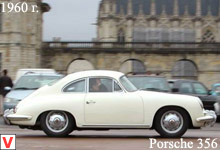
The 1.5-liter Speedster engine produced 55 hp, as an option offered a 70-strong version. Later, the version received an even more powerful 1.6-liter engine. With the price of $ 2,995 it was the cheapest Porsche, the cost was reduced, saving on picking. Suffice it to say that the heater and tachometer were supplied only as additional equipment. The car showed better acceleration compared to the coupe, although its maximum at 153 km / h was slightly lower. Anyway, the Speedster version has become very popular in American sports car races. This model - perhaps the most attractive externally among the early Porsche. It was produced until 1959.
The release of 1171 cars in 1957 became the peak, and then production began to decline. In its place at the end of 1958 came the model «Convertible D». It had a high and more practical front windshield and side windows, as well as more comfortable seats. The following year, the open-top Porsche 356B Roadster replaced the Convertible D, but market interest to the open 356 by the early 60s had fallen significantly.

In the middle of 1962, the Model 356B with a Type 6 bodywork appeared: a double radiator cap, an external filler cap on the right front fender and enlarged windows. The unique 356B “Karmann Hardtop” was essentially a cabriolet body with an additional welded metal roof. The latest modification of the model range 356 was the Porsche 356C 1964 release. He differed with disc brakes in addition to the most powerful engine with sucker pushers in the valve drive and 95 horses ever produced by Porsche. The peak in the number of assembled cars occurred in 1964 - 14151 cars were assembled.
In the same year, his follower, the Porsche 911, was introduced to the US car market (in Europe, the 911 model was introduced a little earlier). The company continued to sell 356C until 1965, while the demand for it was still quite high, even at the beginning of the Porsche 911 era. In 1965, the word Carrera appeared in the company's lexicon. The new member of the 356 family, which debuted in Frankfurt, was named so in memory of the triumph of cars from Stuttgart in the Mexican Carrera Panamericana race in the early 50s. Outwardly, this is the most charged version almost did not differ from the standard 356th.
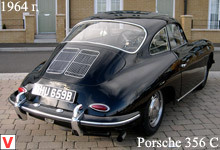
Well, except that the additional nameplate on the front wing. But inside she had a real racing 1.5-liter engine. It turned out to be too fast-moving, and the power was reduced from 110 to 100 hp. But this was enough for the hurricane, by then standards, the dynamics - 200 km / h, and the "hundred" in less than 12 seconds. Engine designer, Dr. Ernst Furman, first set up such a unit on his personal coupe 356 and unexpectedly won the Liège-Rome-Liège rally in 1954. Then there was an idea to release hundreds of such cars in order to homologate them in the “gran tourism” class. Not here it was!
Those who wanted to buy the coolest Porsche turned out so much that the company had to seriously engage in the production of a new model and put a powerful, but noisy engine, not only in a compartment, but also in a convertible. The previous digitization of the speedometer and tachometer was not enough, and their scales “increased” to 250 km / h and 8000 rpm. In 1958, the engine size grew to 1.6 liters, and four years later a 2-liter Carrera 2 appeared - the first Porsche with disc brakes. This couple successfully defended the colors of the brand in numerous rally and circuit races until 1965, when the small-scale production of these models was stopped.
Among the main achievements of Carrera is the victory in its class at Le Mans in 1960. The last representative of the first generation Porsche, type 356C, lived on the conveyor for long. Prepared for the 1964 season, a year later, he gave way to a completely new 911 model. The 356C differed little from its predecessor 356B. And this modification of the sample in 1960, in turn, was not far from model A. A small “tightening” here and there, slightly increased dimensions, new bumpers.
The enlarged rear window and the double grille on the engine compartment lid did not escape the attention of the brand’s fans. Version C was almost the same in appearance, it was given out by modified wheel caps that hid a radical innovation - disc brakes. The rest of the tech nachinok both cars was identical. The standard 1.6 liter engine developed 75 hp, the forced version of the 1600 S - 20 more power. Porsche 356 has always been popular with the press.
In 2004, Sports Car International ranked the Model 356C in 10th place on its list of "The Best Sports Cars of the 1960s." Today, the Porsche 356 is a highly respected collector model. The most desired models from this line are the Porsche 356 Carrera, Super 90 and Speedster. Some of them were auctioned for over $ 250,000. A fully rebuilt Porsche 356 Carrera Speedster (of which 140 pieces were made) was sold for $ 300,000.
